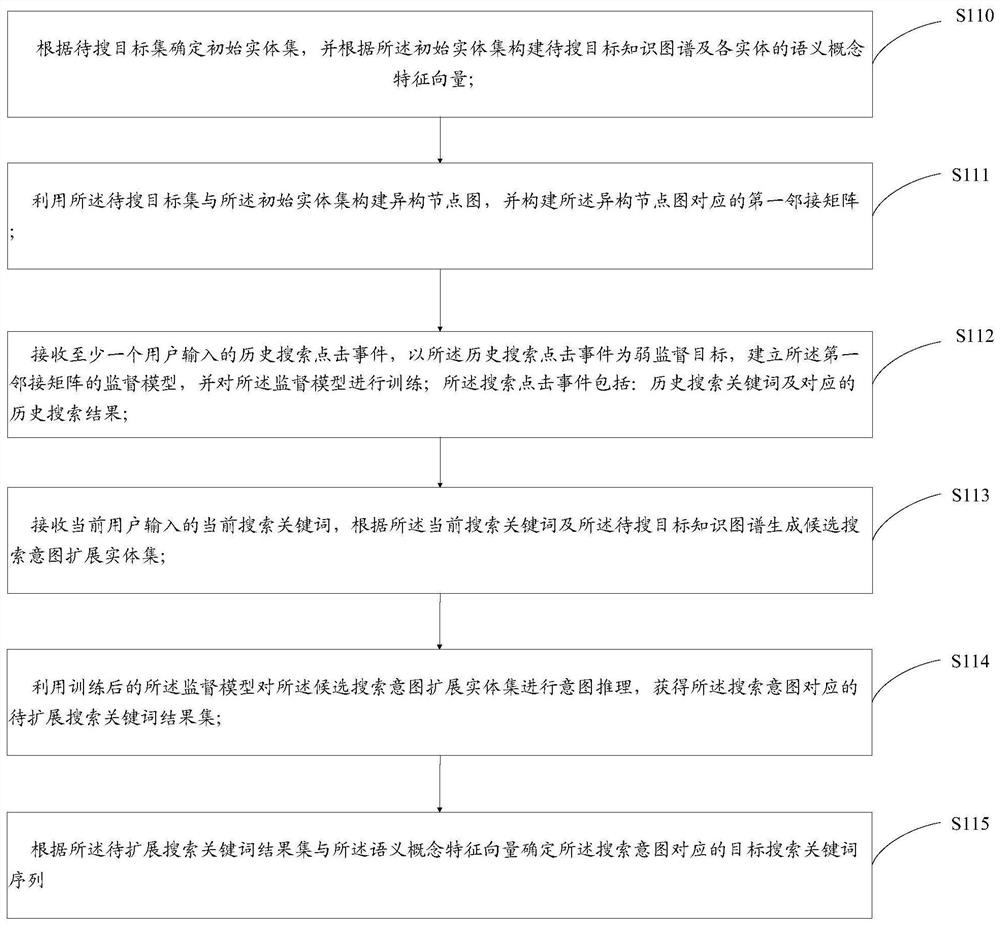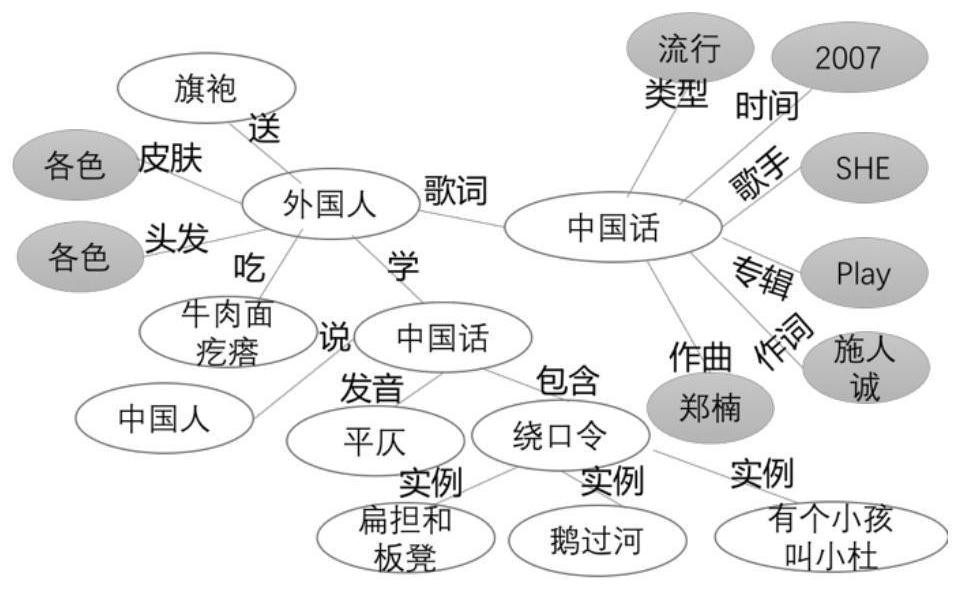Method and device for determining search intention of user
A search intent and user technology, applied in the field of search engines, can solve problems such as not being able to meet user search needs, and not guarantee the hit rate of search results
- Summary
- Abstract
- Description
- Claims
- Application Information
AI Technical Summary
Problems solved by technology
Method used
Image
Examples
Embodiment 1
[0067] This embodiment provides a method for determining a user's search intent, such as figure 1 As shown, the methods include:
[0068] S110. Determine an initial entity set according to the target set to be searched, and construct a knowledge map of the target to be searched and a semantic concept feature vector of each entity according to the initial entity set;
[0069] The targets to be searched may include various types of targets to be searched, such as webpages, documents, songs, and locations. For each type of target to be searched, the set of targets to be searched may include at least one corresponding target to be searched. For example, when the object to be searched is a song, the set of objects to be searched may include multiple songs.
[0070] In order to improve the accuracy of the user's search intention, the initial entity set is determined according to the target set to be searched, and the knowledge graph of the target to be searched and the semantic co...
Embodiment 2
[0131] This embodiment provides a device for determining a user's search intention, such as Figure 4 As shown, the device includes: a construction unit 41, an establishment unit 42, a generation unit 43, an inference unit 44, and a determination unit 45; wherein,
[0132] The construction unit 41 is used to determine the initial entity set according to the target set to be searched, and construct the target knowledge graph to be searched and the semantic concept feature vector of each entity according to the initial entity set;
[0133] constructing a heterogeneous node graph by using the target set to be searched and the initial entity set, and constructing a first adjacency matrix corresponding to the heterogeneous node graph;
[0134] The establishment unit 42 is configured to receive at least one historical search click event input by a user, use the historical search click event as a weak supervision target, establish a supervisory model of the first adjacency matrix, an...
PUM
 Login to View More
Login to View More Abstract
Description
Claims
Application Information
 Login to View More
Login to View More - R&D
- Intellectual Property
- Life Sciences
- Materials
- Tech Scout
- Unparalleled Data Quality
- Higher Quality Content
- 60% Fewer Hallucinations
Browse by: Latest US Patents, China's latest patents, Technical Efficacy Thesaurus, Application Domain, Technology Topic, Popular Technical Reports.
© 2025 PatSnap. All rights reserved.Legal|Privacy policy|Modern Slavery Act Transparency Statement|Sitemap|About US| Contact US: help@patsnap.com



